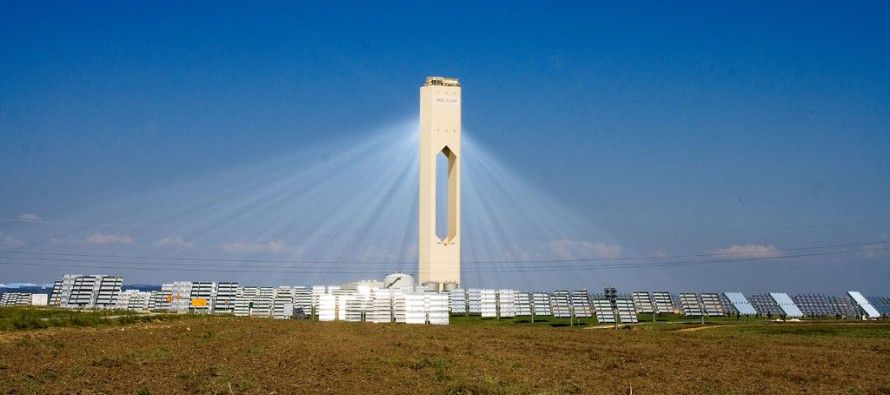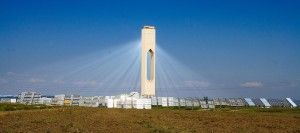Solar power no help during CA’s late peak winter hours

 Solar power is popular nowadays as a “renewable,” non-polluting energy source. It helps California comply with AB32, the Global Warming Solutions Act of 2006, which mandates a 25 percent reduction in greenhouse gases in the state by 2020.
Solar power is popular nowadays as a “renewable,” non-polluting energy source. It helps California comply with AB32, the Global Warming Solutions Act of 2006, which mandates a 25 percent reduction in greenhouse gases in the state by 2020.
“Even on short winter days, California is breaking solar energy records,” declared environmental writer Chris Clarke on the website of KCET, America’s largest independent public TV station, which broadcasts across Southern California.
Clarke was jubilant that solar power had generated more than 2,800 megawatts of electricity just before noon on that day. There also was 1,898 megawatts of rooftop solar power generated on Dec. 4, but that was for the entire 24-hour day.
Archived data for Dec. 4 is not available from the California Independent System Operator’s (ISO) website. So I double-checked the amount of solar power flowing into the state energy grid for Thursday, Dec. 11. The numbers tell a different story.
Having served on the California Energy Crisis Task Force in 2001 for the Metropolitan Water District of Southern California (to which I currently have no affiliation of any kind), I believe I can competently double-check the claims about a major breakthrough for solar energy in California. To understand the numbers that follow, it should be understood that a megawatt is enough electricity to power about 1,000 homes for one hour during non-peak load hours and a kilowatt is enough for one home for one hour.
Solar power marginally helpful during mid-day
During the midday hours from 2:30 to 5:30 p.m., it was true that solar power was producing from 6.77 to 8.15 percent of demand, as shown below:
Solar Contribution to CA Power Grid for Dec. 11 Mid Day Hours
| Time | Total Megawatts | Solar Megawatts Generated | Solar Percent of Total Power Demand |
| 2:30 pm | 28,500 | 2,200 | 7.72% |
| 3:30 pm | 28,000 | 2,000 | 7.14% |
| 4:30 pm | 27,000 | 2,200 | 8.15% |
| 5:30 pm | 31,000 | 2,100 | 6.77% |
| Source: Cal-ISO, Dec. 11, 2013 Note: All excerpted from charts so numbers are approximate | |||
Solar power not helpful during late hour peak load in winter
The problem is that, in California, the peak demand for electricity comes late in the day, from 6 p.m. to 9 p.m., especially on cold winter nights such as Dec. 11. During those hours, solar energy only contributed 5.07 percent at 6:30 pm, 1.48 percent at 7:30 pm, and zero percent from 8:30 pm onward, as shown below.
Solar Contribution to CA Power Grid for Dec. 11 Late Peak Hours
| Time | Peak Hour Demand | Megawatts | Solar Megawatts Generated | Solar Percent of Total Power Demand |
| Noon | MID DAY PEAK | 27,000 | 1,750 | 6.48% |
| 6: 30 pm | SUNSET HOUR PEAK | 31,500 | 1,600 | 5.08% |
| 7:30 pm | 27,000 | 400 | 1.48% | |
| 8:30 pm | 29,000 | 0 | 0% | |
| 9:30 pm | WINTER LATE HOUR PEAK | 31,500 | 0 | 0% |
| Midnight to midnight 24 hour day |
703,000 | 11,700 | 1.66% | |
| Source: Cal-ISO, Dec. 11, 2013 All numbers approximate | ||||
On December 11, there were two peaks in energy demand: one at 6:30 p.m. at 31,500 megawatts and another at 9 p.m., also at 31,500 megawatts. The demand for electrical power at 7:30 p.m. was the same as for noon: 27,000 megawatts.
During the entire 24-hour day of Dec. 11, solar energy contributed only 1.6 percent to the state power grid.
No demonstrable smog reduction
Moreover, there was no demonstrable decrease in air pollution on Dec. 11 that could be attributed to solar power’s output. Unlike conventional power plants, solar power uses no fuel and thus does not emit air pollution.
But the mild 68 degree temperature in Los Angeles on Dec. 11 was not enough to produce an Inversion Layer effect, where warmer air at high elevations traps relatively cooler air below, creating a smog trap. The South Coast Air Quality Management District reported air quality as “Good” for Dec. 11. Remote centralized solar power plants may be reducing carbon dioxide emissions, but not within the crucial urban smog traps.
Conclusions
Here are the conclusions I was able to draw from comparing one winter day’s output of electricity from centralized solar power plants in California and imported solar power from surrounding states:
- Thus far, centralized solar power is only marginally helpful in managing peak power loads during the mid-afternoon.
- Centralized solar power is not helpful in managing sunset and late-hour peak power loads during the winter.
- Centralized solar power does not demonstrably reduce air pollution on mild temperature winter days due to the modest Inversion Layer effect in California on colder days.
- Solar power generation may have set a state record for megawatts generated on Dec. 4. But, according to the U.S. Energy Information Administration, electricity generated from solar photovoltaic and solar thermal power plants are the two highest-priced sources of power by a wide margin. Centralized solar power runs from 15.9 cents to 25.1 cents per kilowatt-hour on average. This is compared to 6.65 cents per kilowatt-hour from an efficient natural gas power plant that reduces air pollution by two-thirds over a coal-power plant. And electricity from a non-polluting hydropower plant only costs 8.89 cents per kilowatt-hour on average.
The media reports of record-setting solar power output are misguiding. Centralized solar power is an expensive option that doesn’t help meet late hour peak energy demands from 6:30 p.m. to 9 p.m. in California, particularly during cold winter nights.
California has 10 existing large centralized solar power plants with a capacity of 713 megawatts and 14 pending solar power plants capable of producing 5,742 megawatts of power in the planning pipeline.
California can look forward to more hot solar power capacity, which won’t help in meeting late hour demands on cold winter nights, unless very expensive battery storage systems costing $250 to $4,500 per kilowatt hour are installed along electric transmission power line routes. A typical home in a mild climate uses 5,000 to 30,000 kilowatt hours of electricity per year to run its natural gas heater in their home.
California has a lot of new centralized solar power coming online and battery storage systems that are being built on environmentalist faith, not proven technology. Better keep a warm sweater for cold winter nights in California unless you want to a huge winter electric power bill.
Related Articles
Does Not Compute
John Seiler: Over the years I’ve written many times how it remains a mystery that the state that continues to
State's health-mandate miasma
Feb. 2, 2010 By JOHN SEILER The victory of Scott Brown in Massachusetts prevents Democrats from enacting a universal health-care
Boeing plant closure cuts 2,000 jobs
Boeing, citing shrinking military budgets, announced last week plans to shutter a massive Southern California jet assembly plant and lay



